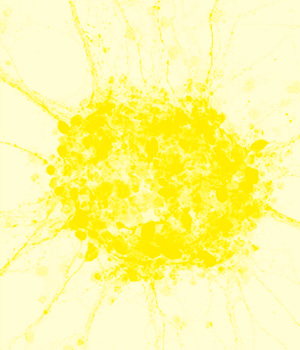Nerve Cells
Billions of nerve cells, which are themselves connected with trilions of electrical synapses, process what we see, feel, and experience so that what we've lived through can be saved and we can learn from it.
However, many ailments of the brain, such as Alzheimer's disease or a stroke, involve the loss of nerve cells. Thus, they lead to limitations on brain function. In contrast to other organs, like the skin, muscles, or blood, until recently people assumed that, once the brain concluded its embryonic development, it lost the ability to restructure nerve cells and therefore regenerate. But we now know that neural stem cells in certain regions of the brain are capable of building new nerve cells our whole life long. The laboratory of Sebastian Jessberger studies the mechanisms that allow stem cells to generate new nerve cells.
Along the way, for example, stem cells taken either from a human's or a mouse's brain then relocated to a petri dish develop into nerve cells. In the image shown here, we can see newly formed nerve cells that were marked using a color response so that they can be analyzed under a laser microscope. Jessberger hopes that, through his research, we will be better able to use stem cells in the future, in order to repair the brain – should something happen.
Sebastian Jessberger is Professor of Neuroscience and Managing Director of the Brain Research Institute at the University of Zurich. More
Related contributions

